May 31, 2025 | 10:21 GMT +7
May 31, 2025 | 10:21 GMT +7
Hotline: 0913.378.918
May 31, 2025 | 10:21 GMT +7
Hotline: 0913.378.918
For nearly 20 years, I have been closely associated with Vietnam Agriculture News. My operational area primarily covers provinces in the Ca Mau Peninsula - a region that was once dense forests with challenging transportation.
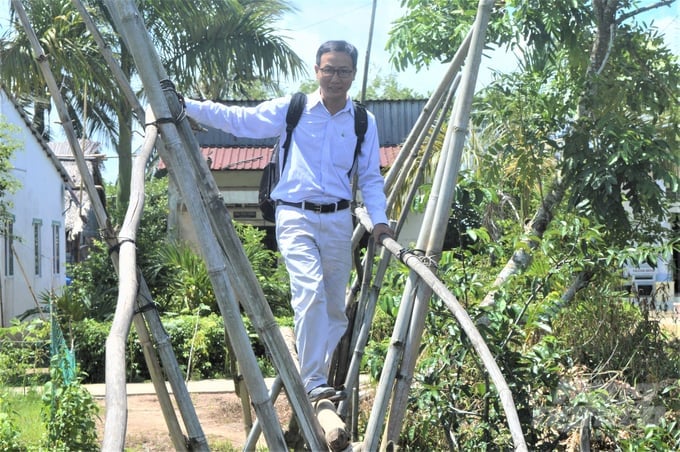
In the past, rural areas were hindered by difficult transportation. To conduct fieldwork, a journalist had to navigate through makeshift bridges and meet farmers for information gathering. Photo: TL.
One day, while on assignment in Hau Giang province, I received orders to travel to Ca Mau with a government delegation from the Ministry of Agriculture and Rural Development to work on shrimp and rice development planning and resolve existing disputes.
After a quick lunch at a local eatery, I packed my backpack, mounted my motorbike, and hit the road. Following the national highway, I found the route quite distant. A friend advised me to take a shortcut through Bac Lieu to reach Ca Mau. As night fell and rain poured, I navigated and asked for directions. The surrounding house grew sparser, with stretches lined only by mangrove trees, causing some anxiety.
After a long ride, I arrived at a ferry landing. Consulting the ferryman, I realized I had reached the border between Bac Lieu and Kien Giang provinces, across the river from Vinh Thuan district (Kien Giang province). At this moment, it dawned on me that I had taken the wrong route. I decided to stay overnight in Vinh Thuan town, renting a guesthouse and planned to resume my journey early the next morning.
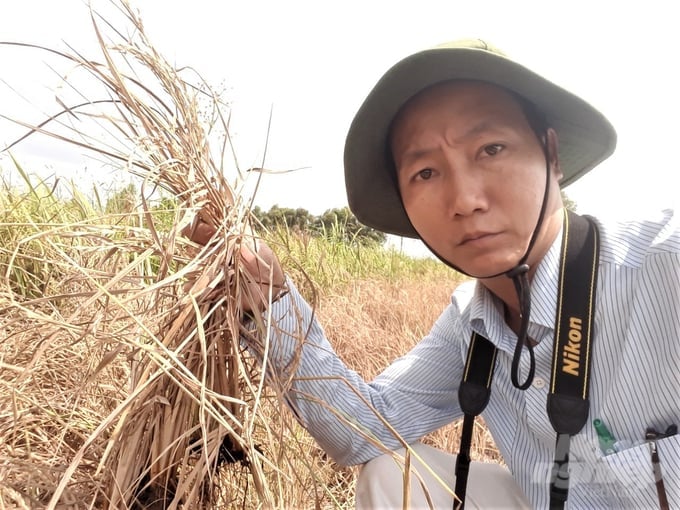
The author is in the rice fields that were destroyed by salinity infection in the previous shrimp-rice war. Photo: Trung Chanh.
When the ferry approached, the dim light of the motorbike revealed a rather muddy path. The rural road was under construction, with excavators piling dirt on both sides to prepare for sand pumping for the foundation. The rain caused water to accumulate, making it difficult for people to move around. The motorcycle wheels spun, requiring them to walk on both sides before the vehicle slowly crawled forward. It took me over two hours to cover a distance of nearly 10 kilometres.
Upon reaching Vinh Thuan town, it was past midnight. After searching for a while, I finally found a guesthouse that was still open. Both the motorcycle and I were covered in mud, and the landlady initially hesitated to accept me. However, after hearing my explanation, she took pity and scooped water to rinse off the dirt from my vehicle. After taking a shower, I was exhausted and just wanted to lie down and sleep, but hunger kept bothering me. I had to ask the landlady for some boiling water to cook instant noodles. Only after finishing them could my belly quiet down and let me sleep.
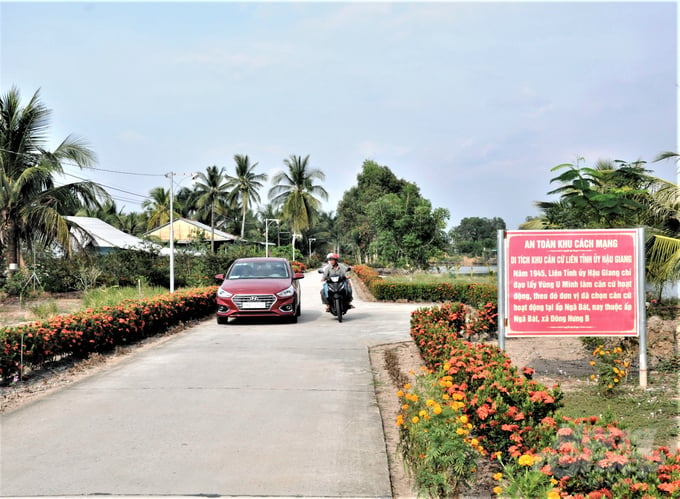
The shrimp-rice farming model has made a significant contribution to socio-economic development, creating new rural roads in U Minh Thuong. Photo: Trung Chanh.
The shrimp-rice farming model has made significant contributions to socio-economic development, transforming the rural landscape, eliminating muddy roads, and positively contributing to rural construction efforts. As of now, in the 4 districts of U Minh Thuong region, Vinh Thuan and An Bien have achieved the standards of new rural areas.
Ca Mau province is considered the birthplace of the shrimp-rice farming model, later expanding to coastal provinces in the Mekong Delta. Since the late 20th century, when high tides flooded into fields, shrimp and fish naturally followed. By chance, they discovered these creatures not only survived in the fields but thrived. Thus, they began farming and caring for them, releasing water at the end of the season to harvest shrimp, yielding much better incomes compared to rice crops.

When initially transitioning, the shrimp-rice farming model sparked conflicts over salinity intrusion, causing many neighbouring rice fields of farmers to perish due to saltwater contamination. Photo: Trung Chanh.
From then on, the wave of canal digging and embankment construction around rice fields to introduce saltwater for shrimp farming not only developed in Ca Mau but also gradually spread to coastal provinces such as Bac Lieu, Soc Trang, and Kien Giang. Wherever the saltwater reached, shrimp farming areas expanded accordingly. It also marked the beginning of a prolonged shrimp-rice farming dispute lasting decades, disrupting local unity and sometimes escalating into confrontations, wielding knives, and hostile confrontations.
In Kien Giang, the districts of U Minh Thuong (formerly part of the Ca Mau peninsula) including An Bien, An Minh, U Minh Thuong, and Vinh Thuan were planned for the development of shrimp-rice farming models covering tens of thousands of hectares. However, during the initial conversion phase, there were considerable challenges in implementing the planning. While pioneering households eagerly switched to the 1 shrimp- 1 rice crop rotation (shrimp-rice), many households remained loyal to freshwater ecosystems, cultivating rice and catching wild fish.

After decades of transition, the shrimp-rice farming model has developed both in terms of methods and diversification of production targets, particularly by intercropping various types of shrimp and sea crabs..., which has helped increase income on the area. Photo: Trung Chanh.
Brackish water shrimp farmers draw saltwater from the sea and pump it onto their fields while neighbouring rice farmers strive to retain freshwater. The adjacent fields are patchy like a giant leopard skin, with newly constructed embankments often insufficiently robust, allowing saltwater to overflow and seep through, causing rice crops to die. Both shrimp farmers and rice farmers are peasants relying solely on their fields for income, leaving them with little recourse for compensation. Each side had their justification. The shrimp farmers argued they were following state-approved plans, whereas the rice farmers claimed they had not yet converted due to the lack of irrigation systems and unfamiliarity with shrimp farming techniques.

Currently, there are many high-yielding rice varieties suitable for cultivation in shrimp-rice farming areas, especially in organic farming, which brings high efficiency to farmers. Photo: Trung Chanh.
In many places, conflicts in shrimp-rice farming arise not from the local residents but from confusion in the local government's planning and management. For example, in Hamlet 40, Tay Yen A commune (An Bien district), around 2015-2016, 7-8 households boldly switched to shrimp farming, while nearly 60 other households remained loyal to rice cultivation.

The shrimp-rice battle has gradually faded into the past, with both now peacefully coexisting under the "shrimp embracing rice roots" model, providing a decent income for farmers. Photo: Trung Chanh.
Translated by Hoang Duy
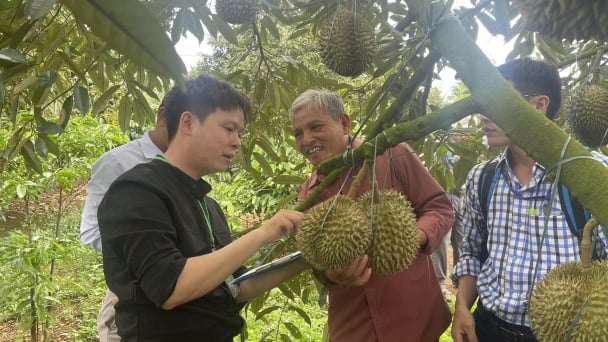
(VAN) For the durian industry to succeed, the value chain must fulfill its commitments to the government, the community, and international partners.
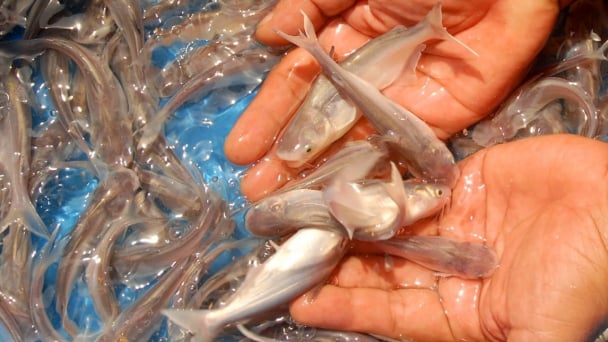
(VAN) Vaccinating juvenile pangasius helps reduce disease, antibiotic use, and farming costs, increasing profits for export-oriented farmers in An Giang.

(VAN) Due to a limited supply of workforce and competitive recruitment requirements, businesses struggle to retain talented veterinary human resources.
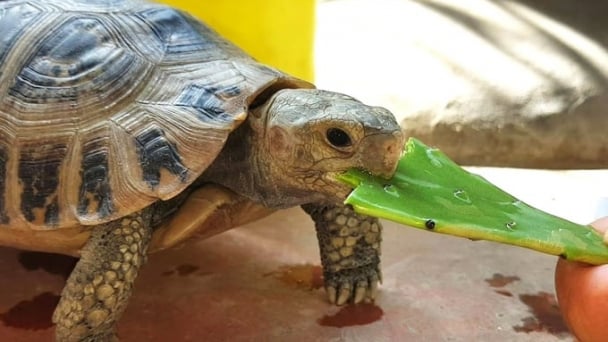
(VAN) WOAH’s guidance aims to mitigate disease risks through a One Health approach that balances economic, conservation, and public health interests.

(VAN) Ms. Nguyen Thi Dung, Deputy Director of Ngoc Hoang Cooperative, shared about the journey of bringing dragon fruit to Europe, achieving annual revenues in the billions of VND.
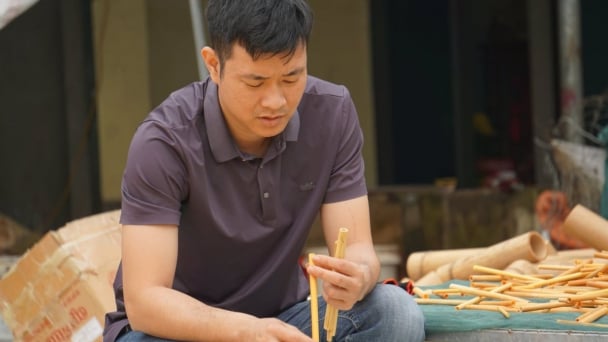
(VAN) Bamboo products from Thang Tho Bamboo Cooperative have reached many countries around the world, while also creating jobs for local workers.
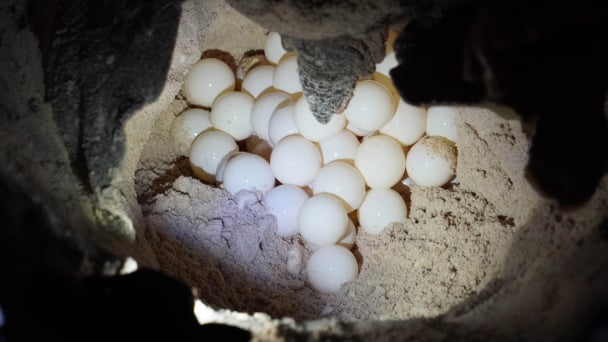
(VAN) The Management Board of Con Dao National Park reported that a green sea turtle, tagged in the Philippines, has traveled thousands of kilometers to lay 84 eggs on Bay Canh Islet.